How to Link Youtube Music Feed
For better or worse, streaming services like Spotify, Apple Music, YouTube Music, and Tidal have taken over the music industry, and physical media be damned. Streaming services provide a fresh, ever-growing library of music and algorithms that serve music based on your preferences. The problem with these streaming services (okay, one problem) is that the algorithms they heavily lean on are flawed, and each streaming service is slightly different in terms of UI, suggestions, and data collection.
If you've just switched to YouTube Music, we have some tips and tricks to maximize your listening experience and fully take advantage of YouTube's rather impressive suggestion algorithm.
Wait...is YouTube Premium better?
Maybe this is a question best addressed before you sign up, but it's worth pointing out that YouTube Music Premium is included in a YouTube Premium subscription. You have to decide whether it's worth the extra monthly cost to shell out for the full-fat YouTube Premium over YouTube Music Premium.
YouTube Music Premium comes in at a monthly cost of $9.99, while YouTube Premium jumps up to $11.99 per month. That extra $2 per month isn't a big price increase. Still, it grants you the privilege of background listening on both YouTube Music and regular YouTube videos—a serious boon for those of us that like to use videos as podcasts during a long commute. If background video play sounds appealing to you, you might want to shell out the extra $2 monthly for a YouTube Premium subscription, but if you only plan on using the subscription for access to music, stick to the YouTube music subscription.
How to set up and customize YouTube Music
When you first sign up for YouTube Music, many of the options in settings are disabled by default. Go into the settings and adjust things like audio quality, equalizer settings, location preferences, and play history options to your liking. Not all the options on the YouTube Music settings page will significantly change your listening experience, so let's look at which you should adjust and why.
How to add your favorite artists in YouTube Music
YouTube Music is mostly algorithm-based. This means the algorithm will suggest music that it thinks you will like based on the information you give it. YouTube Music asks for details on your favorite artists when you first open the app (much like Spotify), and this information is the first step in letting the algorithm know what type of music you want to hear.
Don't panic if you didn't select all your favorites, though. You can return to the Pick some artists you like page by navigating to Settings , scrolling to the bottom of the page, and tapping Improve your recommendations . You can also update your favorite artists as your taste changes to further refine your recommendations.
Upload your own music
YouTube Music has over 50 million songs available. However, if the local indie band from down the road doesn't have its music on the streaming giant, you can upload it to YouTube Music to listen to and add to playlists along with all the other music on YouTube Music. You can only upload music via the desktop, but it's a nice feature to have.
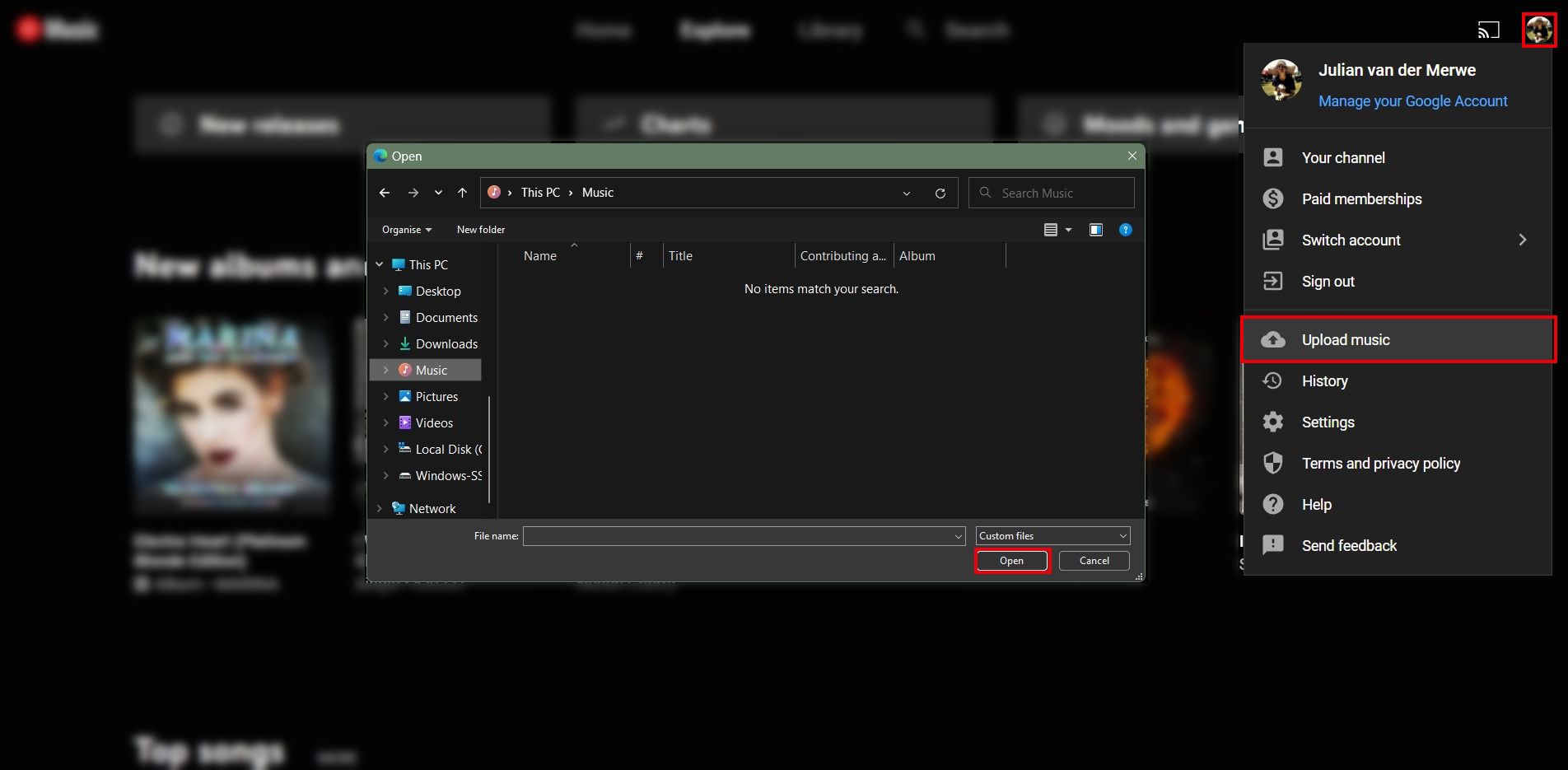
The music you upload to YouTube Music is only available to you. If you include any uploaded songs in a playlist and share that playlist with a friend, the songs won't be there for your friend. Similarly, the music you upload doesn't affect the recommendations that YouTube Music feeds you. If it's unavailable on YouTube Music, the algorithm doesn't have enough information to base recommendations on it.
Enable or disable locations in YouTube Music (your choice)
YouTube Music automatically disables location-based recommendations when you sign up. There are two ways to enable location-based recommendations:
- The YouTube Music app: Go to Settings > Privacy and location and turn off Pause location-based recommendations for this device).
- The location history of your Google account: Go to the YouTube Music Privacy and location page by selecting Location history, choosing your Google account, and enabling or disabling location history on your Google account. If your local music scene isn't all that hot, you should probably leave this disabled.
Download music manually or automatically
One of the best perks of having a YouTube Music Premium subscription, or pretty much any premium music account, is being able to download music and listen to it while you're not connected. YouTube Music allows you to download any song, album, or playlist by long-pressing on what you want to download and selecting Download from the pop-up menu that appears.
YouTube Music's Smart downloads feature takes downloads one step further. Smart downloads (when enabled) intelligently download your favorite songs to your phone's internal storage or SD card. To enable Smart downloads, go to Settings > Library and downloads , then scroll down to the bottom and enable Smart downloads. After enabling the option, you can adjust how much of your storage to use for the Smart downloads feature.
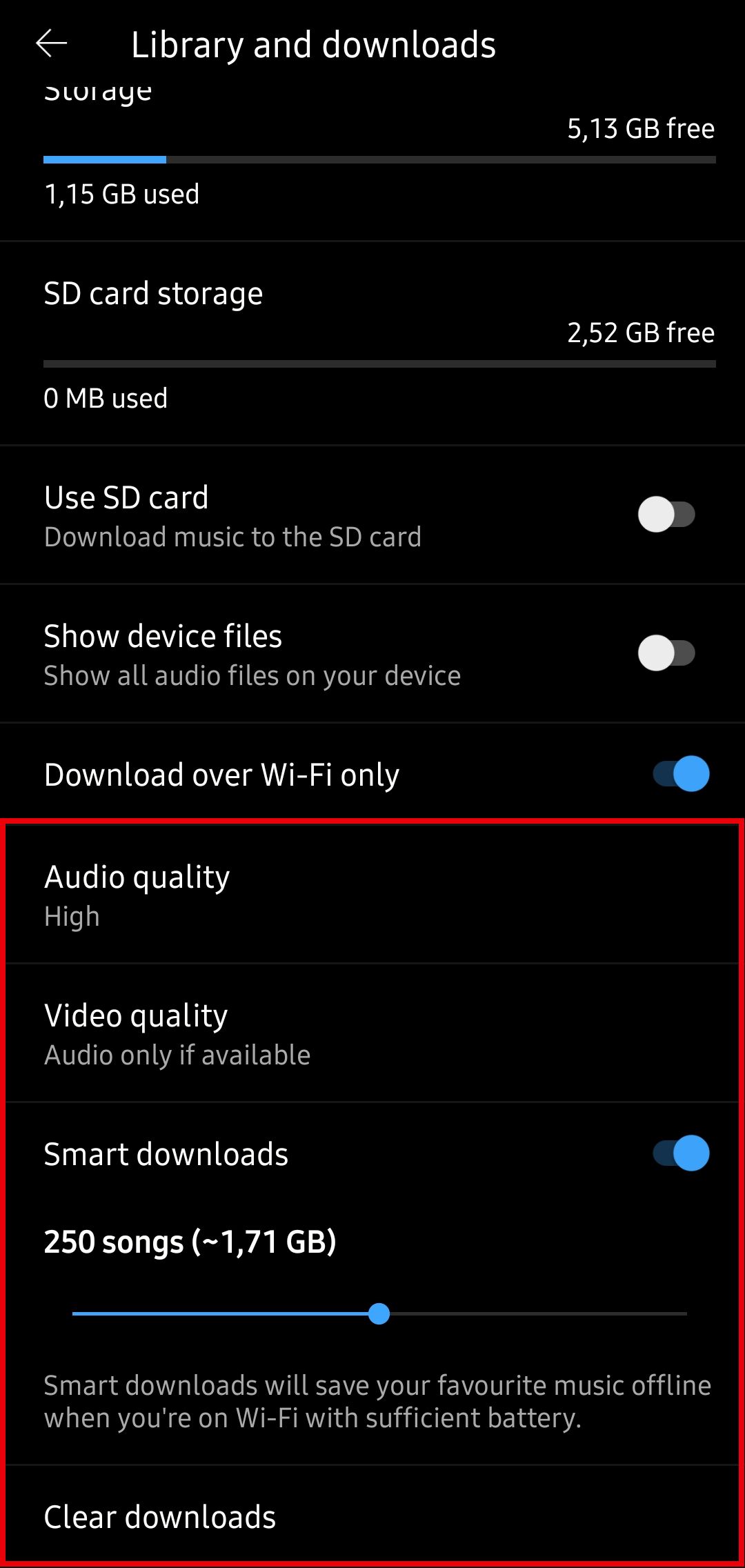
Optimize YouTube Music audio quality and data usage
Audio quality is subjective. You may like heavy bass, but your friend might prefer clean vocals and a wider sound stage. So it's worth taking the time to set up your sound profile to your liking. The first audio option to update, unless your internet connection is slow, is to set the streaming quality on Wi-Fi (Settings > Audio quality on Wi-Fi ) to Always High to make sure the maximum audio fidelity is maintained.
If you struggle with poor internet connectivity or a limited data plan, drop the streaming quality down to Normal or Low. You can also enable a few other data-saving options on the Settings page:
- Don't play music videos converts music videos to audio-only.
- Limit mobile data usage reduces data usage when off Wi-Fi.
- The Low quality option under Audio quality on mobile data helps reduce the consumption of data.
- Setting Show animated thumbnails to Never helps reduce network usage.
On the Settings page, navigate to Sound quality and effects > Equalizer and select a preset that sounds good to your ears using the audio device you usually use. You can also enable and tune Dolby Atmos if your device supports it.
How your listening habits affect your YouTube Music experience
If you listen to music a lot, it's worth adjusting your habits a little to maximize the quality of your YouTube Music recommendations. Sure, the algorithm is good and will keep improving, but it needs information to learn. There are a few ways to train the algorithm and a few settings you can adjust if training isn't going quite as planned.
Like, dislike, search, and skip songs for better recommendations
If you don't like a song that YouTube Music recommended, skip or dislike it. Similarly, you should like songs that you enjoy. It seems trivial, but consider how many times you've sat through an awful song because "It's just three minutes. Who cares?" If you don't tell it, YouTube Music has no way of knowing you don't want to hear the songs you don't like, and we're not quite ready with direct brain-machine interfaces just yet.
Searching for songs trains the algorithm and teaches it your preferences as well. If you're willing to go out of your way to find and listen to a song, you must like it, right? YouTube Music also uses the search and watch history from your Google and YouTube (the video one) data to provide better recommendations.
This is not necessarily always useful, though, so you can disable the feature by opening the YouTube Music app, navigating to Settings > Privacy and location , and checking the options Pause watch history , Pause search history , or Pause activity-based recommendations (this last one pauses location, search, and watch-based recommendations). You can also delete search and location history from this page if you want to reset the recommendations to some degree.
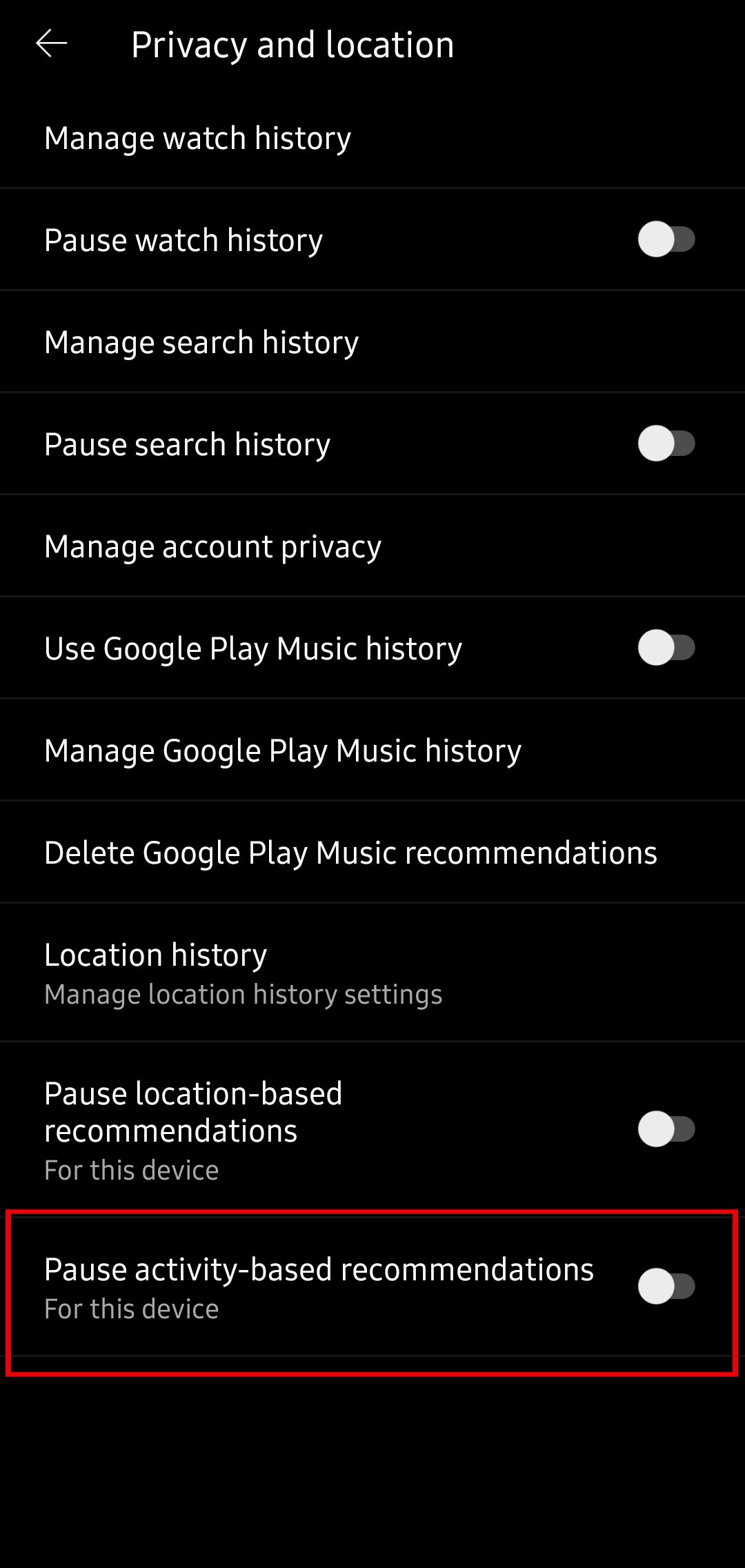
While on the Privacy and location page, look at the Google Play Music history options available. If you used Google Play Music before Google pulled the plug, you may want to enable Use Google Play Music history to import your listening habits from the old app and make your recommendations more accurate.
How to reset the recommendations in YouTube Music
Sometimes the algorithm doesn't want to play ball. If you've tried pausing the location-based and activity-based recommendations as well as watch and search history, and you're still getting bad recommendations, clear your YouTube Music recommendations.
To clear YouTube Music Recommendations on mobile, tap your profile picture in the upper-right corner to summon your account options, navigate to Settings > Privacy and location and find the Manage watch history, Manage search history, and Manage location history options. Each of these needs to be deleted manually. After opening each of them, find the Delete option and select the period for which you wish to remove your listening history.
Clearing watch, location, and search history also deletes that information from each app. YouTube deletes your video history, Google Maps deletes its location history, and Google Search deletes your search history.
Similar to Spotify's Song Radio, YouTube Music automatically creates playlists based on your listening history and the song you're listening to. Which isn't a bad way to find new music based on your tastes, to be fair. Still, that may not be for everyone.
If you're the type that likes to take control of your listening experience, create your own playlists on YouTube Music. On top of the convenience of having playlists to save and organize your music, there are some extra features you can use when it comes to YouTube Music playlists.
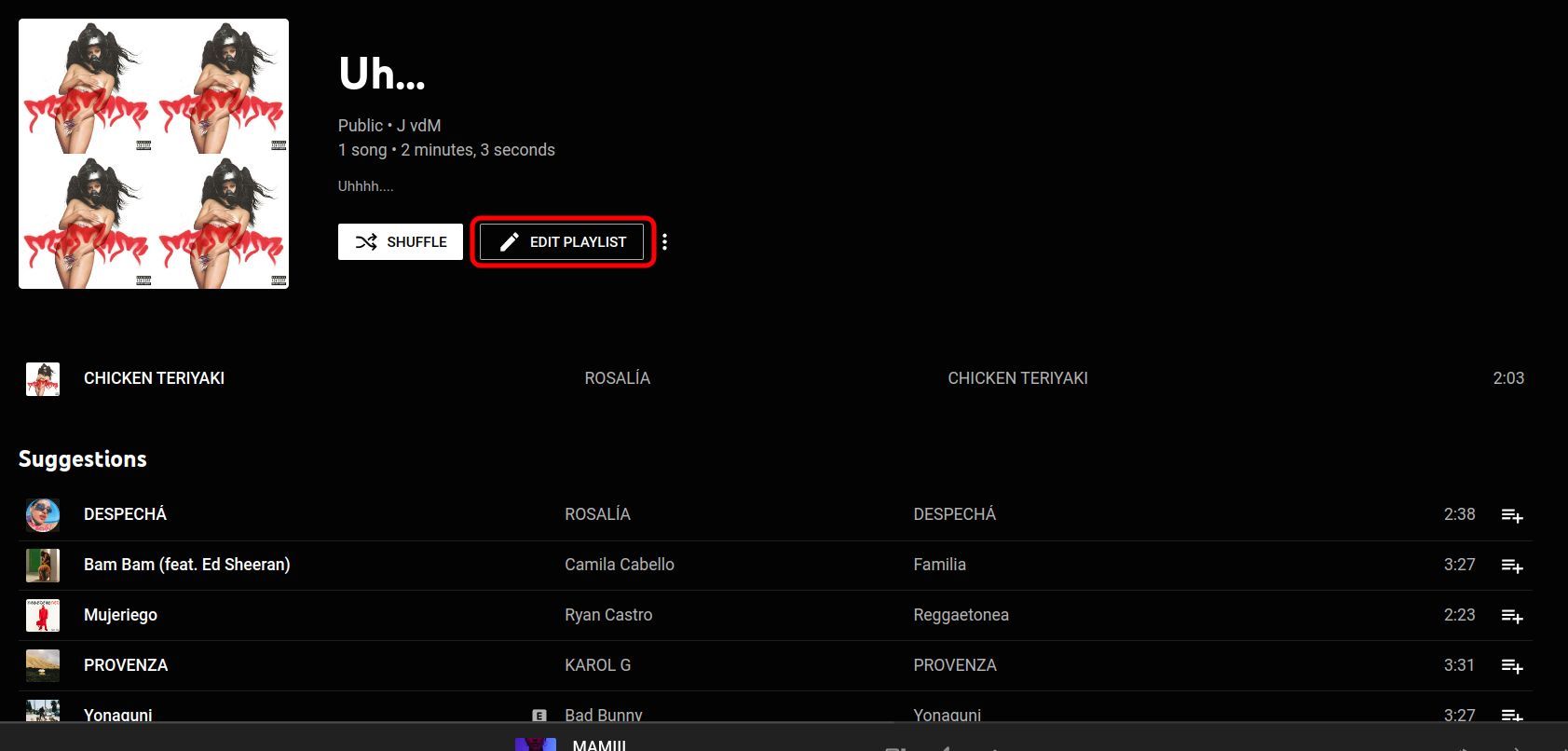
The first thing you should know about when it comes to YouTube Music's playlists is the sharing settings. When you create a playlist, set the sharing settings correctly. The default setting is public, so be careful around those pesky music elitists and your guilty pleasures.

The best thing about YouTube Music's playlist sharing is the collaboration. If you want to create a party playlist, share music with friends, or need playlist for a road trip that the whole family can add to, go to the Collaborate tab in the playlist sharing options and enable collaboration. This allows other people with the playlist link to add songs to the playlist as they please.
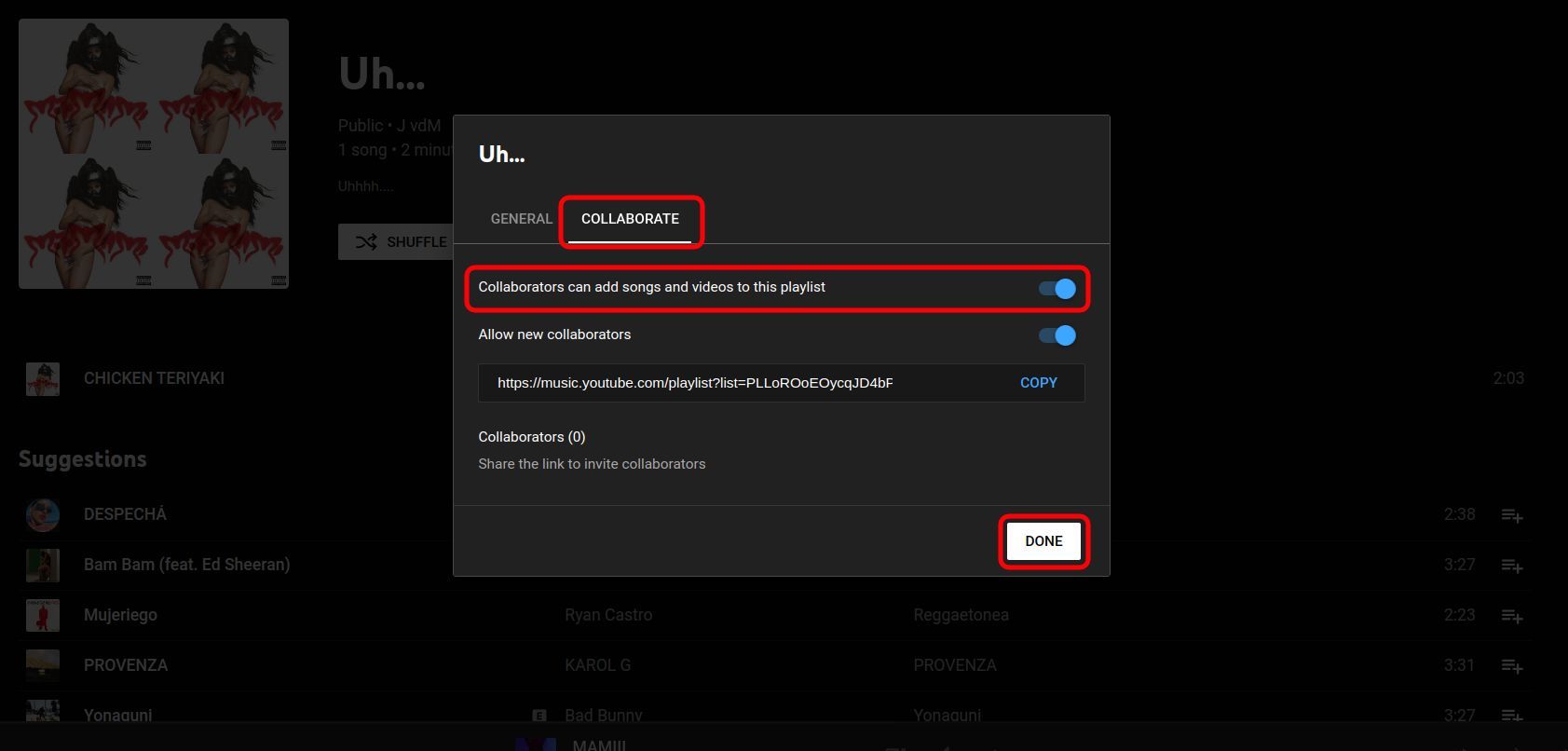
YouTube Music isn't the only game in town
Though streaming platforms and their algorithms are supposed to make things easier, and you shouldn't have to sweat the small stuff, you now know how to get into the nitty-gritty of YouTube Music.
If YouTube Music isn't for you, give one of the other streaming alternatives a try. Apple Music, Qobuz, offer a high-res listening experience, although you might want to make sure you have a set of capable headphones if you want to make the best of the increased quality.
Source: https://www.androidpolice.com/youtube-music-explainer-setup-tips/
0 Response to "How to Link Youtube Music Feed"
Post a Comment